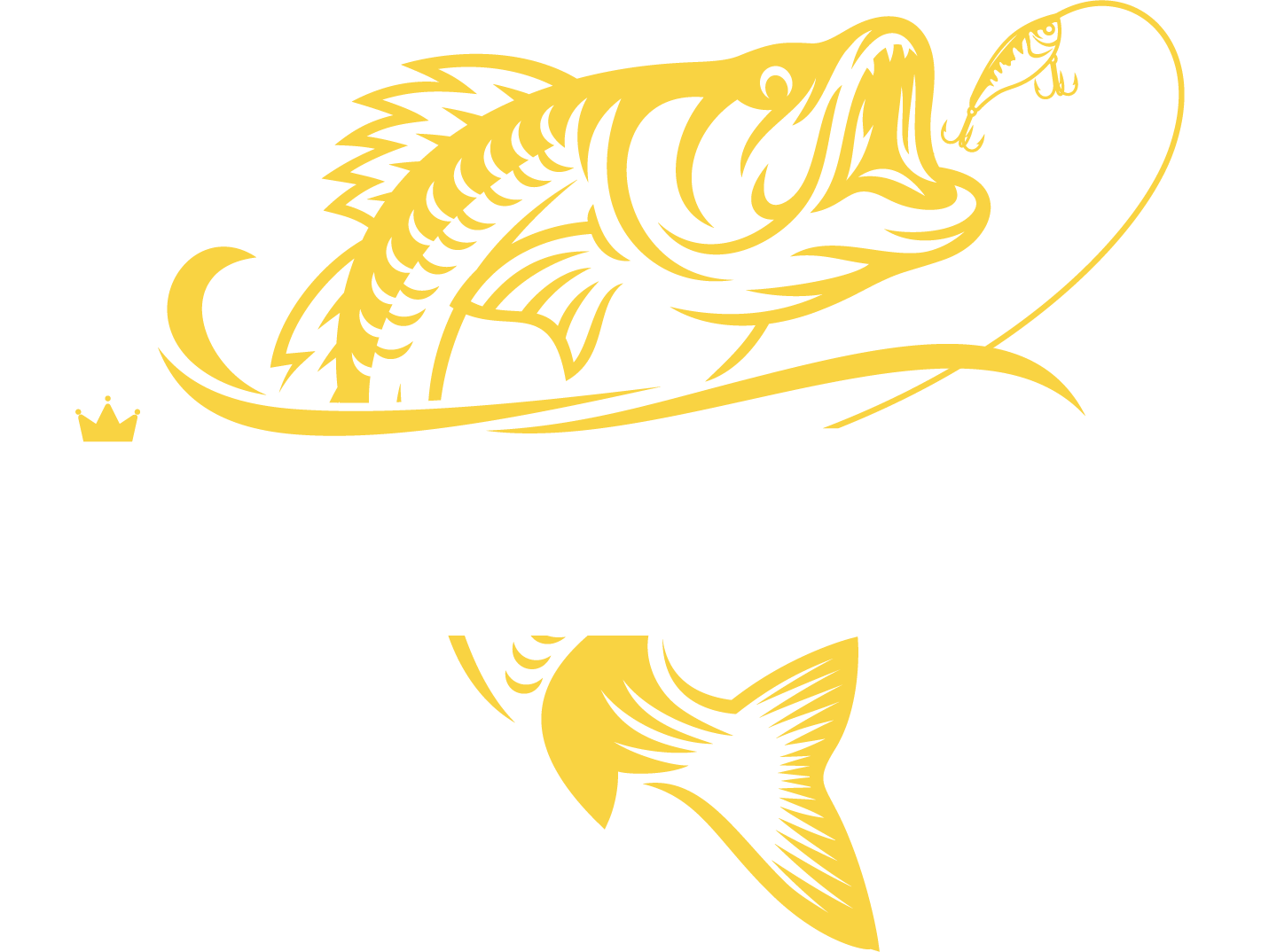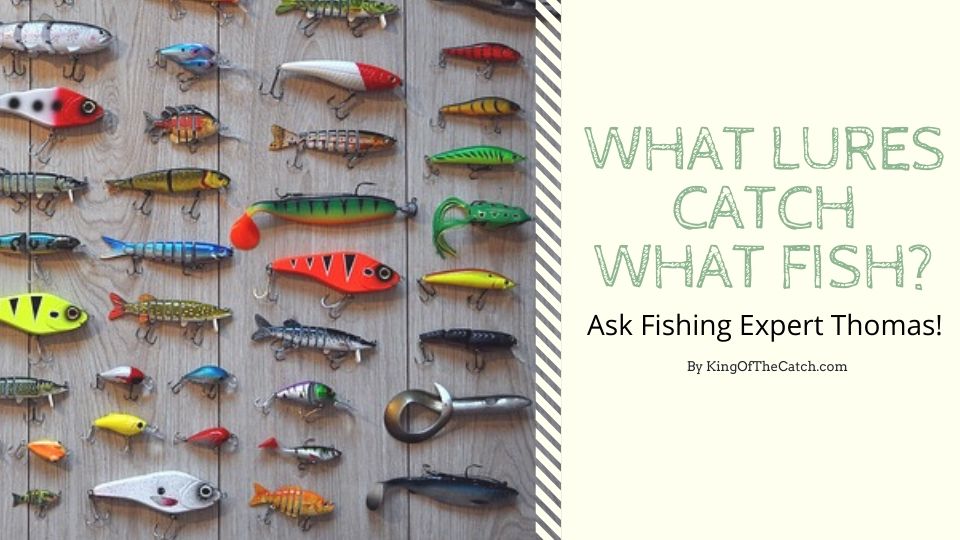Going fishing? I hope your tackle box is equipped with the essential lures to win the catch! When it comes to both fresh and saltwater fishing irrespective of which part of the world you are from, having the right knowledge and experience about fishing and the different types of lures for different fish will go a long way in making you the king of the catch! Since I’m a fishing enthusiast myself with years of experience with baits and lures, I would like to impart some of my understandings on what baits work with what fish.
Question: What lures catch what fish?
Hi, I am Simon, 35 from Cairns, Australia, and I have a question. I was wondering if the same type of lure catches different fish or if I need to change lures to catch varied species. Can you tell me what lures catch what fish?
Answer: Hi there, Simon. I am Thomas and I will help you through with your question. The question you brought forward is a frequently asked question by many fishing buffs. And it is no wonder as there are so many lures out there and it can be confusing which bait lures which fish.
Before I get into the details, let me first brief you on fishing lures. Fishing lures are used to either attract fish or imitate small creatures to get the fish to bite on the bait. With the availability of various fishing lures, it can be hard to decide which will work best. Make sure you choose your baits according to your target and the water condition. Pelagic fish lures will be different from a bass lure. Also, if you are fishing in a strong current, you will want to use a heavier lure instead of a lightweight one.
Now let’s jump into the different types of fishing lures and the types of fish it lures.
Crankbaits and Plugs
Crankbaits aka minnows and plugs resemble fish and are made of hard plastic. This fishing lure is built to be cast out and reeled back in. Now, this type of lure has three major formats – deep, medium, and shallow. If you want the plug to run deeper, you will have to consider a plug with a longer lip that is more close to the bait. Some crankbaits are designed weedless but it is still best to stay away from brush and weed.
There are different types of crankbaits that
I have categorized below for your deeper understanding:
Topwater/Surface Lures
Just as its name implies, surface lures are intended for topwater fishing. They usually float on the surface of the water to imitate fish prey to lure fish. These lures emit burbling or popping sounds that attract fish when you jerk the tip of the rod.
Swimming Crankbaits
When you pull the swimbaits through the water, it acts like a swimmer and propels side to side. Swimbaits are generally curvy with a straight surface on the head that gives them the ability to swim.
Thin Minnows
This type of lure can be used for fishing on both the surface as well as underwater. They resemble minnows in both shape and color with a small front lip which works pretty much like the swimming crankbait.
Diving Lures
Diving lures will serve you better if you intend on fishing at deeper levels. This type of lure calls attention to a lip that is bigger than thin minnows allowing them to fall deeper into the water. If you want the lure to go deep down, you should retrieve it quickly. Although some diving lures stay where they are when they are cast out into the water, some of them will surface to the top if you stop retrieving.
Crankbaits are used to fish almost every type of larger species that devours smaller baitfish such as bass, muskie, perch, catfish, and pike. You should definitely check out the highly-rated Rapala lure for an optimum fishing experience.
How to fish with crankbaits?
Since most crankbaits usually stay on the surface but dive underwater when you reel in fast, you can benefit from this. Imitate how a fish would behave by making a series of reeling in and stopping movement.
Jigs
One of the most common and cheapest types of fishing lures is the jig. But it certainly isn’t a product to be underestimated. Jigs come with weighted hook and head and are typically accompanied by a feather, crawfish, or soft plastic grub. When you are fishing for bass, you don’t need to hurl your lure to a far-off distance. Fishing with jigs will require you to retrieve in a bobbing motion.
The best place to fish with jigs is near rocks, brush, and weed where they could get hung up. Most jigs feature just a hook but there are some few with wire guards and brush to keep them weedless. Jigs will help you fish species such as trout, bluefish, mackerel, flounder, bass, and fluke.
You can use this lure all year round in both warm and cold water. Jigs are generally used to fish bass and other big fish that lives in freshwater. One good example of a jig lure for fishing bass is the cost-effective Boo Jig Bass Fishing Lure. Check it out today!
How to fish with a jig?
For the best experience with jigging, let your lure descend to the bottom. Once you know it has reached the bottom, slightly raise your rod up and start reeling in as you slowly drop the rod lower. You can try using various movements and speed to find the perfect move for yourself.
Spinnerbaits
Spinnerbaits resemble an open safety-pin and is also known as safety-pin spinners. They are mainly used for freshwater fishing. This type of bait features one or more thin metal teardrop-shaped spinner blades that work like a propeller when you pull the lure through the water, thereby attracting fish. Most of the spinnerbait blades are coated with a light reflective surface that entices the fish to the light.
Since the appearance of spinnerbaits resembles a shiner or minnow, this type of lure attracts predatory fish species such as pike and bass. Aside from those, spinnerbaits are also used to fish for species of fish in the likes of perch, walleye, and trout.
Don’t miss an incredible fishing experience with Booyah Pond Magic spinner. Click on the link to get yours today!
How to fish with spinnerbaits?
You will get the best experience with spinnerbaits if you fish in clear water. That way, both you and the fish will be able to see the excellent visuals made by the propeller. If the water is clear, you just need to dip your lure just below the surface of the water. Ensure that the blades are underwater.
Spoon Lure
The spoon lure is one of the most ancient lures dating back to 1850 and perhaps one of the simplest and most reliable fishing baits of all time. So if you want to keep things simple while reaping the maximum benefit, a spoon lure will be your best choice!
A spoon lure is almost a replica to the vessel of a spoon, hence its name. This vessel is attached with a treble hook at the other end and is designed to fish below the surface of the water. Now, when you pull the spoon lure underwater, the vessel will impact the lure to tilt from side to side drawing fish to it. Upon grabbing the spoon, the fish hooks itself on the lure which makes it convenient for anglers.
Depending on the size of the spoons, these lures catch various species of fish. Bigger spoons are excellent for catching species like walleye, northern pike, salmon, largemouth bass while smaller spoons are perfect for fishing panfish and trout. A great example of a bigger spoon you shouldn’t miss out is the Johnson Sliver Minnow bait.
How to fish with spoon lures?
With spoon lures, you can either troll or cast it. For trolling, you will need downriggers to set a preferred drop range. As for casting, cast the lure more than 10 feet below the target area and reel it back. Maintain a correct steady pace while retrieving it to let the spoon wobble perfectly.
And there you have it!
Good luck with your quest on becoming the King of the Catch!
Thomas

Niels Thomas is a wildlife expert and fishing fanatic that works with major fishing brands like Deeper Sonar, Abu Garcia, Berkley, PENN, BassPro and Pure Fishing. Through sharing the best fishing tips, tricks, gear reviews, locations and much more he hopes to inspire fishing fanatics to start their own journey towards becoming the King of the Catch!

